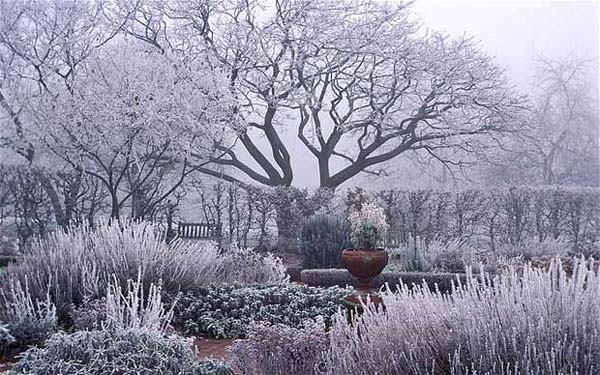
The winter of 2020 is the perfect time to plan for the gardens in the upcoming year. Your planned gardens can be for either the ornamental or productive spaces in your yard. Blueberry bushes are an example of a plant that is both ornamental and productive. They grow well near a structure, as their size is appropriate for a foundation planting. Just plant them far enough away from the foundation to avoid a damaging disruption. Herbs and vegetables can also be planted near structures for a twofold purpose. Lavender, rosemary and carrots come immediately to mind.
Research the size and shape of the plants that you are considering. Recognize that what grows below ground is relevant to your selection. Assess with root growth and overall size and spread with these in mind. You do want to choose areas on the property that are free of underground utilities, away from leaching fields, and able to support mature plants under overhead wires without trimming height or width.
If you are planning your home’s presentation, also known as its landscape, consider its look in all four seasons. A realtor will confirm that a well-landscaped and maintained yard adds value to the property.
Leaf color, branch color, plant shape, berries, color and time of flowers are aesthetic features that can all help decide your choice of plant. You also do want to choose a plant that is the right size and shape at maturity for the area in which it is planted.
Know the type of soil in which you are planting, as soil can naturally be acidic and alkaline. There is much less work and cost if you choose a plant that grows well in the soil type that you have, rather than choosing a plant that needs continual soil amendments. A soil test is very useful for the home gardener, providing a report regarding the nutrients and current pH of your soil.
Check with your local extension office or co-op for the cost and schedule of a soil test. The UT website ag.tennessee.edu/spp has all the needed testing info.
If possible, choose a native plant when selecting new trees and bushes. They support the ecosystem, including the birds, bees, squirrels and larger lifeforms. Humans do have the choice to help the wild things survive. That action and intent is stewardship.
Part of the process of planning for the next growing season is to generate a wish list for your goal: beauty, food, environment. If you gardened in the previous season, evaluate the successes and challenges of the previous year. This applies to both ornamental and productive gardens.
There are basically three growing seasons. Will you have the time to actively participate in spring, summer and fall gardening? By that, I question if you will be rotating, changing or consecutively planting in your garden? The other option is to plant once and enjoy the plant all season. The choice is determined by available time and productivity needs, but that choice is yours.
If you had a vegetable garden last year, rotate the position of the vegetables in the garden. It is most important that different plant families reside in different areas of your garden each year. This minimizes diseases and pests particular to each family.
If you mulched last fall, you have two options. Neither option removes the mulch from the bed. The mulch can be turned into the soil when the soil is dry enough. How can you tell? Soil that is too wet to be worked will hold together in your hand as a clump of clay. Let it dry out more.
The other option is revitalizing an old method. Just plant in the soil where the mulch is decaying. The mulch continues to decay through the seasons, adding to the humus in the soil. This supports microorganisms in the soil. Their life purpose is to add to the soil composition, improving the available nutrients and moisture retention for plant use.
When gardeners work to improve the nutritional value of the vegetables they grow, they are supporting soil health. Mulching and composting are easy methods of doing just that. Not only does less soil disturbance create less work, but the benefit from the method is cumulative. The soil continues to improve each year.
Now is the time to peruse seed catalogs. Order for all seasons and store in a cool, dry place until planting. My heirloom seeds from previous gardens are stored in the refrigerator. If you are using seed saved from previous seasons, you do want to test germination viability on the seed. The viability will deteriorate for each year that the seed is stored.
If you are growing from seed, be aware of target dates to put the plants out. They will need to be prepared by hardening them to the difference in germination temps and outdoor temps. The date they should be moved to the outdoors depends on the plant and its growing cycle. Count back the days from transplant date to determine when to start the seed. Most transplants have a 4-to-8-week start, ahead of the directly seeded plants.
For organization and ease of assessment of this year’s plants, consider using a record-keeping chart. It is available for download here.












